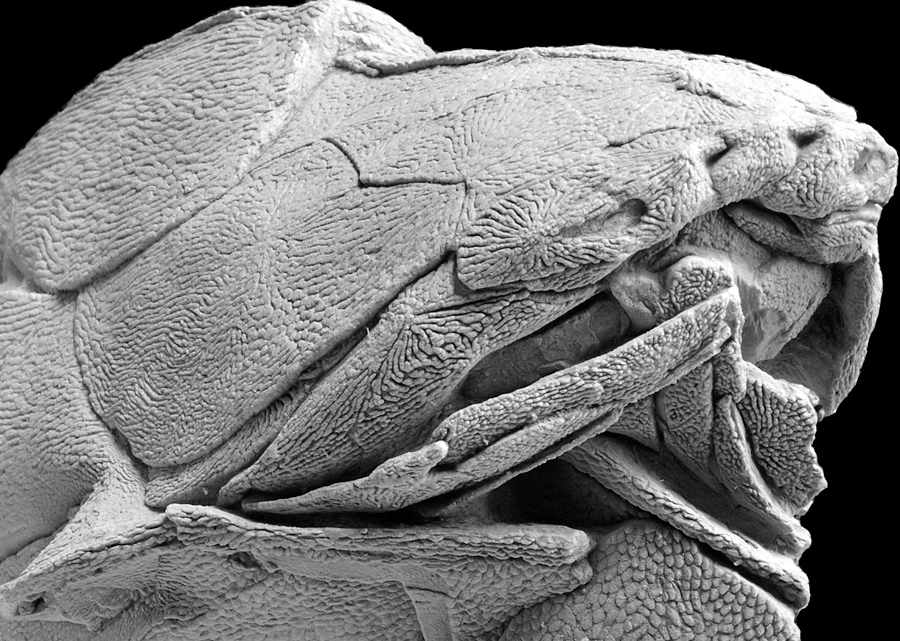We're open daily this holiday! View holiday hours
Science News
Fish Face!
September 27, 2013
by Molly Michelson

Meet your distant relative, Entelognathus primordialis, possibly the first earthling with a face. Or at least a familiar face.
Entelognathus primordialis (where Entelognathus means “complete jaw”) is described this week in Nature. Discovered in a quarry in China, the remarkably well-preserved fossil is somewhat 3D, displaying a modern type of jaw.
E. primordialis is a placoderm, an early class of fish that lived 430 to 360 million years ago. These fish were covered with an armor of bony plates and gave rise to two later groups—bony fish and cartilaginous fish.
The evolution of jaws is one of the key episodes in the evolution of vertebrates, but the gap between jawed and jawless vertebrates is so large that it has been hard to work out the individual evolutionary steps in the transition. Min Zhu and his colleagues hope to make the link with E. primordialis.
The 419 million-year-old fish fossil has jawbone features previously restricted to bony fishes, but has the full body armor seen in placoderms. It would have been around 20 centimeters (eight inches) long.
Prior to this recent find, most scientists agreed that placoderms had no jaw and were more similar to the cartilaginous fish, like modern day sharks, while the bony fishes are believed to be our ancestors. According to Nature News:
Such fishes went on to dominate the seas and ultimately gave rise to land vertebrates.
In addition to facing off with placoderms, the new study puts cartilaginous fishes into a whole new light—perhaps they are even more evolved than previously thought.